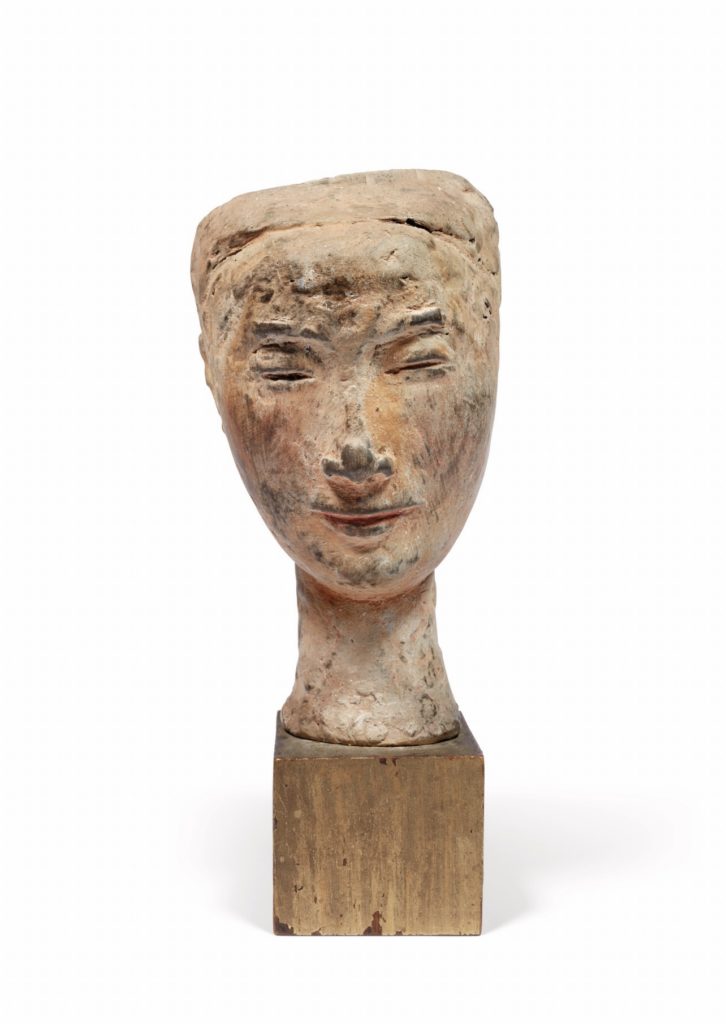Vu Cao Dam, circa 1939, “Woman’s Head”, or the power of idealization
Before the war, Vu Cao Dam, who is often overlooked for having graduated from the sculpture section of Hanoi’s Ecole des Beaux-Arts in 1931, was happily working concurrently in gouache and ink on silk, and in sculpture.

Later, Vu Cao Dam would use the greater plasticity of clay and choose to stick less to the masses, but here we see the consolidation of his first style, forged during his schooling in Hanoi and exhibited, for example, at the Exposition Coloniale in Paris in 1931.
Far from the land of his birth, the artist kneads the local soil and uses the material to support his memories. Embodying, as if to mitigate the oblivion that gradually sets in and revive the memory of a fading face.
The power of idealization.
The slanted eyes, the Tonkinese headdress, like a quotation.
Vu Cao Dam’s modelling, incisions and striations give us this attentive gaze, this charming smile, this fine nose, this half-open mouth and this long neck.
Vu Cao Dam reconstructs this seductive woman with his bare hands, sometimes aided by wooden spatulas, some with wire tips.
Upright, hieratic. Tonkinese.
Later, Vu Cao Dam would create more explicitly Vietnamese women, coiffed and dressed… à la vietnamienne.
Essentialised.
Here, the back of the head, hollowed out, reveals the imprint of the artist’s fingers which, in an almost carnal modeling (not casting), offer us this unique, sensual work, the fruit of the ardor of the young thirty-year-old who, the previous year, had married Renée Appriou, the companion – who would fulfill him – of a shared fusional life.
Jean-François Hubert